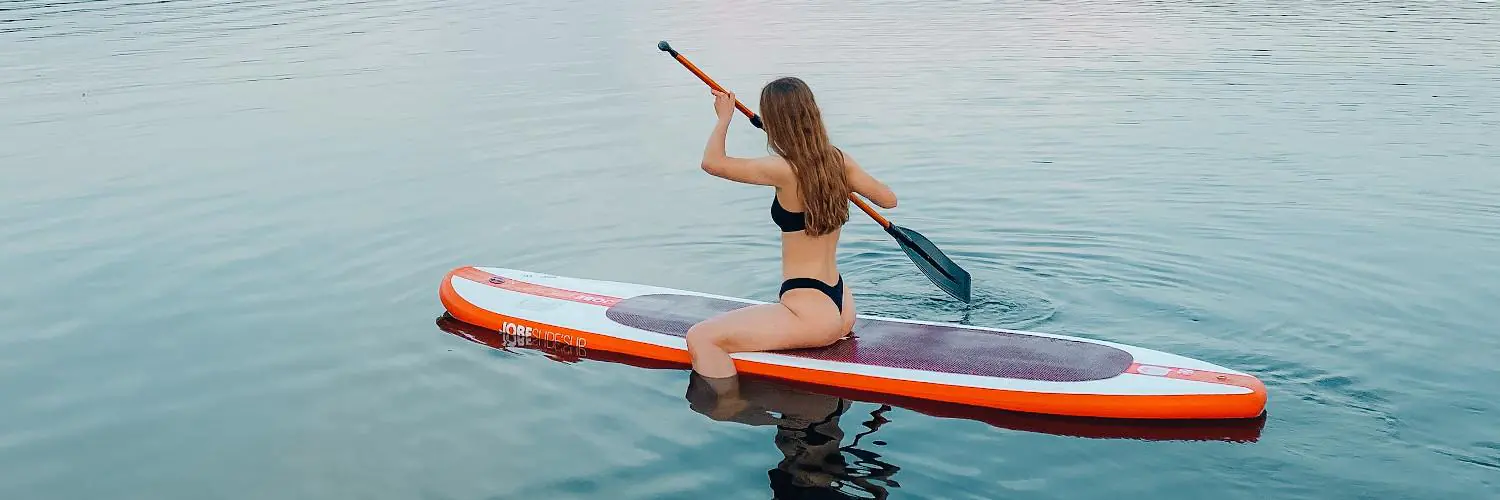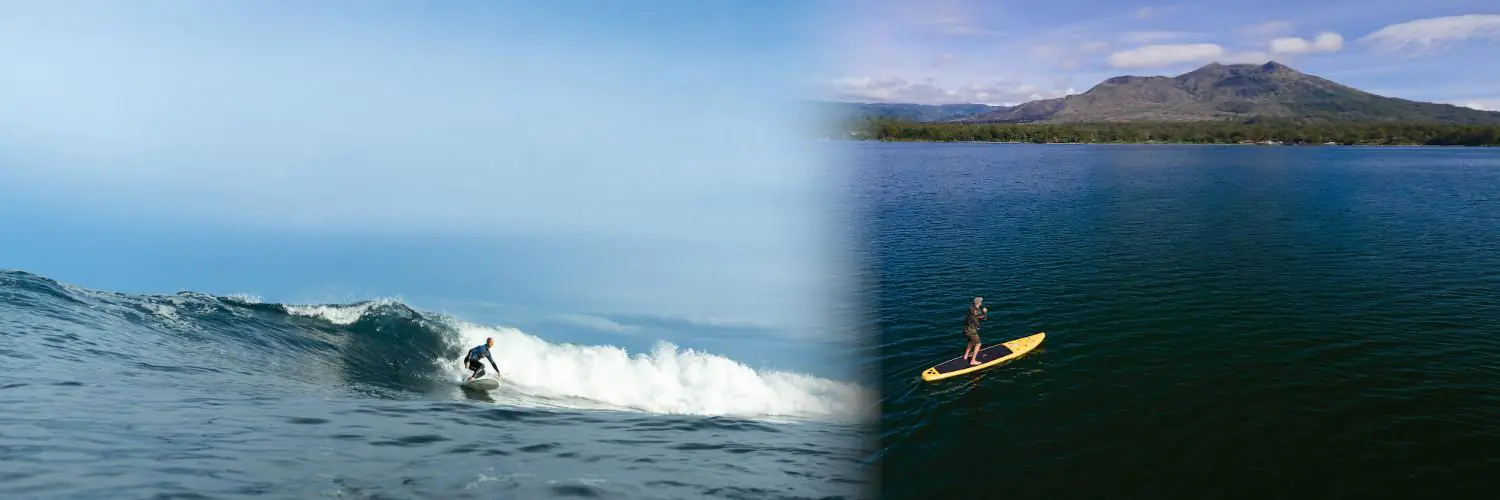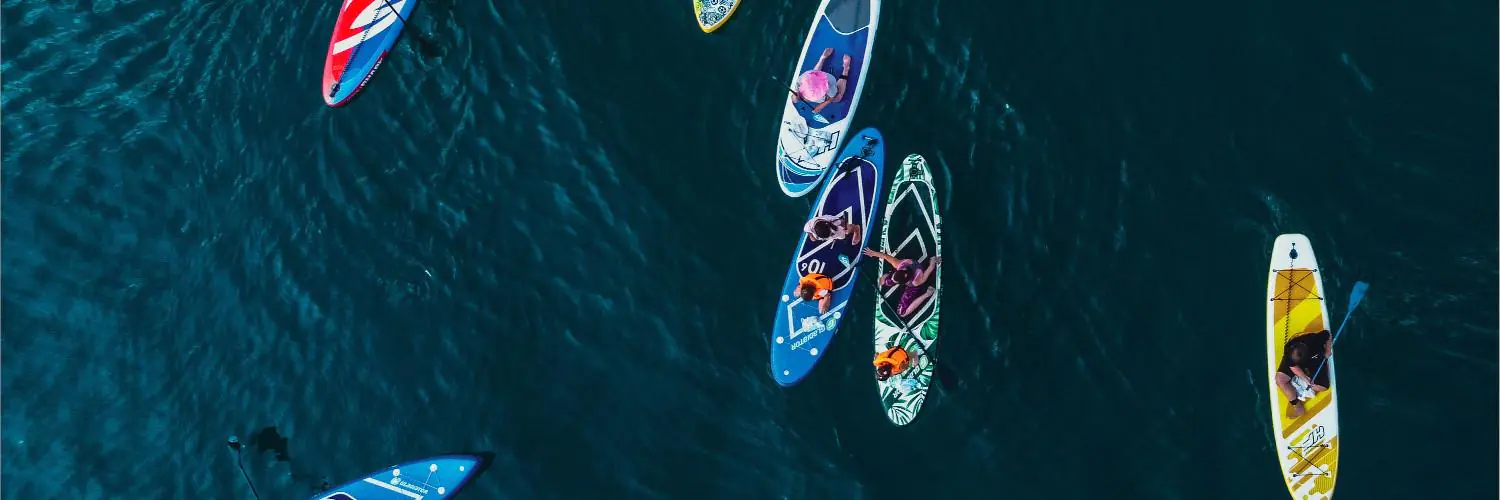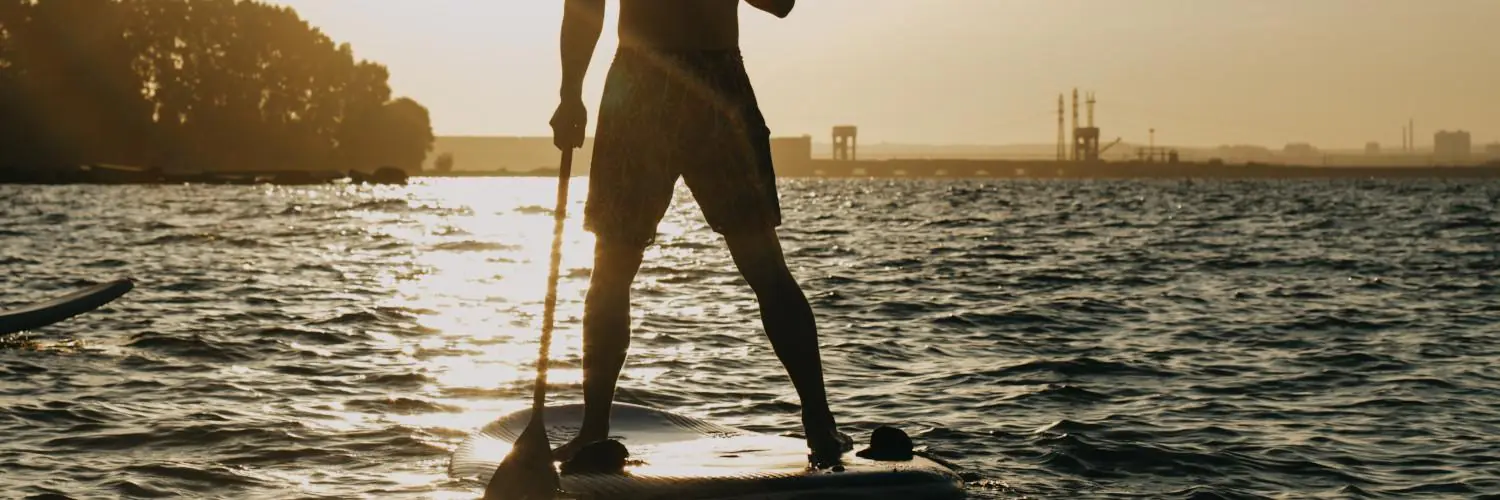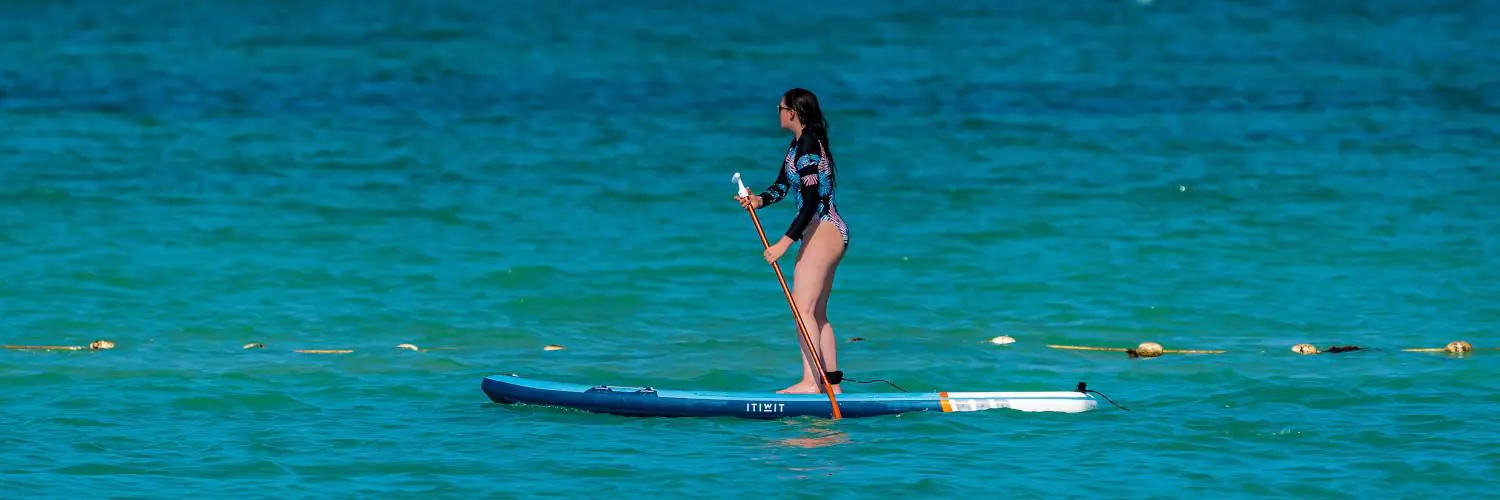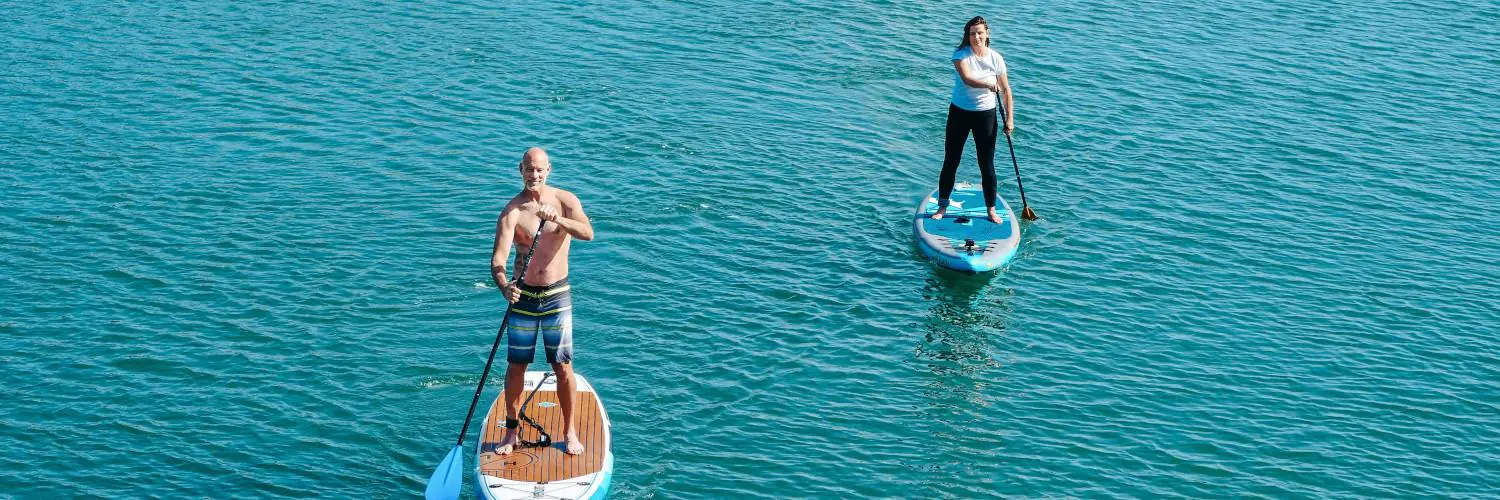Stand up paddle board surfing is a unique and exciting variation of traditional surfing. Participants ride waves on a stand up paddle board while using a paddle to navigate through the water. Many people who like water sports pick it.
To excel at stand up paddle board surfing, one must be equipped with the right gear and possess the skills needed to launch, paddle through waves, and successfully surf them. Choosing a board that can help maintain balance and provide maneuverability while riding the waves is the right board to begin this adventure with.
Table of Contents
Understanding SUP Surf
SUP surf, or stand-up paddleboard surfing, mixes regular surfing with using a paddle to move in the water. To begin SUP surfing, you need the right gear, like a surf SUP board. Maneuverability when riding waves and better floatability are the boards designed for this.
When waiting for waves, line up parallel to the incoming sets, standing in a hybrid stance facing out towards the ocean and holding your paddle on the toe side of the board. As the desired wave approaches, turn 90 degrees to position yourself perpendicular to the oncoming wave. Helping to maintain balance and control, this allows for a smoother entry into the wave.
Remember, practice makes perfect. If you’re a newby, you need to practice paddling, balance, and picking waves. This makes your confidence and skill grow to let you enjoy your time on the water.
Choosing the Right Equipment
When preparing for stand up paddle board surfing, selecting the proper equipment is crucial. A board designed for surfing, like the Boardworks Kraken, should be selected. Consider factors like construction materials (fiberglass, plastic, wood, or carbon fiber) and board types (inflatable paddle boards or solid boards). Opt for a board with a high rocker for maneuverability.
Next, select an appropriate paddle, preferably a full-carbon SUP paddle for a lightweight and efficient experience. A leash is essential as it connects you to the board – opt for a coiled leash that avoids tangling.
To make your time more enjoyable, consider wetsuits and and bags. Wetsuits keep you warm, while board bags keep your board safe and easy to carry. When you buy gear, look at used options and compare to find the best. Remember to also research fins and their compatibility with your chosen board, as they provide stability and control while surfing.
Necessary Skills and Techniques
In order to stand up paddleboard surf (SUP surf), mastering several skills and techniques is essential. Achieving balance on the board requires core strength, as well as control in your arms and legs – this can be built through regular practice and yoga exercises.
Maneuverability is key during SUP surfing. Practicing the 180º surf SUP turning technique and parallel turning technique will help you maintain better control in the waves. When waiting for waves, it’s ideal to stand in a hybrid stance, with your toes facing the ocean and your paddle on the toe side of the board.
Taking off in SUP surf involves precise positioning. Wait for the right wave, then turn your board 90 degrees so it’s perpendicular to the oncoming wave. Focus on maintaining balance and maneuvering your board to ride the wave successfully. To get good at SUP surfing, you need to be patient and to practice.
Understanding Waves and Conditions
You should know and understand current water conditions when you SUP surf. Many things like wind and tides can change how it feels. Before heading out, start by checking wind strength and direction, as these impact your paddle route and wave riding capabilities.
Choose beach breaks with small to medium-sized surf, as they are ideal for beginners. When waiting for waves, select a surf stance by lining up parallel to the incoming sets, with toes pointing towards the ocean. Paddle on the toe side of the board, ensuring better balance and maneuverability.
Catching waves effectively relies on timing your paddling through the surf and following the wave line. To ensure a smoother wave-riding experience, keep a confident posture and maintain your balance even when transitioning from the calm water to the breaking wave,
Getting Started with Paddle Boarding
Being able to explore various bodies of water is given by paddle boarding, an exciting water sport suitable for all ages. Stand up paddle boarding (SUP) is a subtype of this sport and involves capturing waves while maintaining a standing position.
To begin, you’ll need the right equipment, which includes a suitable SUP board, a paddle, and a personal flotation device (PFD) for safety. To ensure a successful ride, the board’s floatability and maneuverability should be balanced.
Once adequately equipped, there are three main challenges for beginners: launching and paddling past breaking waves, catching the wave, and ultimately surfing the wave. To enjoy the exhilarating experience of SUP surfing and be on your way, practice these skills diligently.
SUP Surfing Safety Measures
Safety should always be a priority when SUP surfing. Wearing a life jacket in one crucial safety measure. The Coast Guard classifies stand-up paddleboards as vessels, so it’s legally required to have a life jacket on board.
Another essential piece of safety equipment is a leash. A leash connects the rider to their board with an ankle strap, preventing the rider from getting separated from the board. This is particularly important in the surf zone and open ocean paddling.
Locations that provide flat water and fewer hazards, such as rivers and lakes, should be chosen. These are more controlled environments and is much safer for SUP surfing. Avoid areas with boats, moorings, or submerged objects.
In short, always wear a life jacket, use a leash, and also choose safe places.
SUP Surfing in Different Waters
SUP surfing can be enjoyed in various water bodies like lakes, rivers, and oceans. When selecting a paddleboard for each location, consider the unique characteristics of each environment.
Lakes: Calm, flat conditions are common in lakes, making them ideal for beginners. Launching from a stable longboard is suitable for learning the basics of stand-up paddleboarding.
Rivers: River SUP surfing requires a more maneuverable board with a stable tail, which helps with navigating the current and avoiding obstacles. Longboards may not be the best option here.
Oceans: Challenging conditions like waves and currents call for a specialized surf SUP board that combines stability and maneuverability for optimal performance. Choose a board with a slightly larger volume for better floatation in the swell.
Remember to respect local laws and safety guidelines when SUP surfing in different waters.
Tips for Advanced SUP Surfing
As an experienced SUP surfer, you’ve likely mastered the basics, so it’s time to explore more challenging waves and refine your skills. Choosing the right gear is paramount. Opt for a surf SUP board with a surfboard-type shape, designed specifically for maneuvering in the surf. A lightweight carbon SUP paddle enhances your control and performance.
Tom Carroll’s Outer Reef is a popular choice for advanced paddlers, known for stability and responsiveness. Remember to practice varying your foot placement, adjusting your weight, and mastering different turns. Keep refining your technique, and enjoy pushing your SUP surfing limits.

